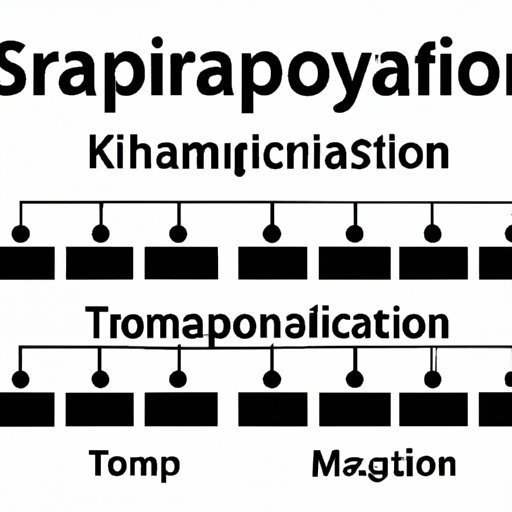Introduction
Taxonomy is the science of classifying organisms based on their characteristics and evolutionary relationships. It’s an essential tool for understanding the diversity of life on Earth. However, it can also be a confusing concept, with multiple levels of classification, each nested within the other. In this article, we aim to answer the question of which level of classification contains all the others.
Unlocking the Hierarchy of Classification: Which Level Reigns Supreme?
The hierarchy of classification includes several levels, such as domain, kingdom, phylum, class, order, family, genus, and species. The purpose of this hierarchy is to group organisms based on their shared characteristics and evolutionary history. Each level is nested within the previous one, forming a pyramid-like structure.
Of these levels, the highest level of classification contains all the others. This level is known as the domain. Understanding the role and significance of this level is pivotal for accurate and informative classification.
The Evolution of Classification: Understanding the Importance of Higher-Level Taxonomy
The history of taxonomy goes back to the ancient Greeks, who classified organisms into plants and animals. However, it was not until the 18th century that the Swedish botanist Carl Linnaeus developed the modern system of classification still used today.
Over time, taxonomy has evolved to include molecular data, which has revolutionized our understanding of the relationships between organisms. Earlier, classification was based on morphological characteristics, whereas now, it includes genetic and biochemical data.
Higher-level taxonomy, which includes domains, kingdoms, and sometimes supergroups, plays a vital role in understanding the relationships between organisms. This level of classification focuses on shared traits and evolutionary history, allowing us to better predict the characteristics of organisms based on their classification.
Demystifying Taxonomy: Exploring the Top Level of Classification
At the top of the hierarchy of classification is the domain level. This level divides life into three domains: Bacteria, Archaea, and Eukarya.
Bacteria and Archaea are both prokaryotic cells, meaning they do not have a nucleus or membrane-bound organelles. Bacteria are found in various environments, including soil, water, and living organisms. They play essential roles in medicine, agriculture, and biotechnology. Archaea, on the other hand, are typically found in extreme environments, such as hot springs, hydrothermal vents, and salt lakes.
Eukarya, the third domain, includes all organisms with eukaryotic cells, meaning they have a nucleus and membrane-bound organelles. This domain includes animals, plants, fungi, protists, and other groups of organisms.
The Role of Kingdoms in Classification: An Overview
The second-highest level of classification is the kingdom. The kingdom level divides organisms into broad groups based on shared characteristics. In the domain Eukarya, there are four kingdoms: Animalia, Plantae, Fungi, and Protista.
Animalia includes all animals, such as mammals, birds, reptiles, fish, and insects. Plantae includes all plants, from small mosses to tall trees. Fungi includes mushrooms, yeasts, and molds, while Protista includes a diverse group of unicellular organisms, such as amoebas and algae.
Classifying Life: Why the Domain Level is the Foundation of Taxonomy
The domain level is the foundation of taxonomy because it forms the basis for further classification. By dividing life into the three domains, we can better understand the fundamental differences between prokaryotic and eukaryotic cells.
Each domain is further divided into kingdoms, phyla, and other levels of classification. For example, Animalia is divided into several phyla, including Chordata, which includes all vertebrates, and Arthropoda, which includes insects, crustaceans, and other arthropods.
The Top of the Chain: A Guide to Understanding the Supergroup Level of Classification
Sometimes, a supergroup level of classification is used in addition to or instead of kingdoms. Supergroups cluster organisms that do not fit neatly into traditional kingdom-level groups. Some supergroups include the Stramenopiles, which includes diatoms and brown algae, and the Excavata, which includes parasitic organisms.
The use of supergroups is still debated among taxonomists, as they can add an additional layer of complexity without necessarily improving our understanding of an organism’s relationships.
Conclusion
In conclusion, understanding which level of classification contains all the others is crucial for accurate and informative classification. The domain level is the foundation of taxonomy, dividing life into three broad categories based on cell type. Kingdoms and sometimes supergroups further divide life into more specific groups, allowing us to better understand the relationships between organisms.
By better understanding the hierarchy of classification, we can gain a deeper appreciation for the complexity and diversity of life on Earth.
